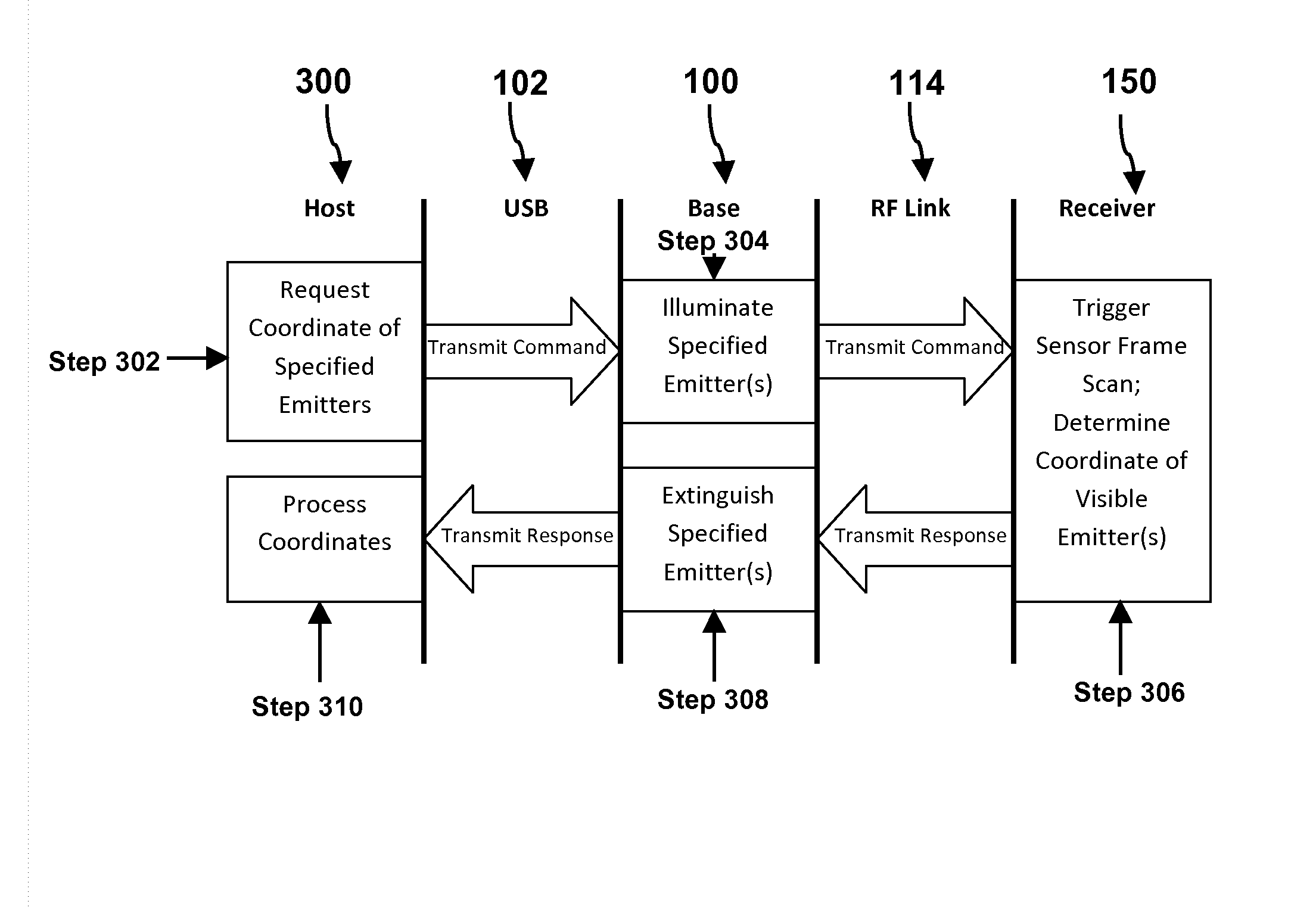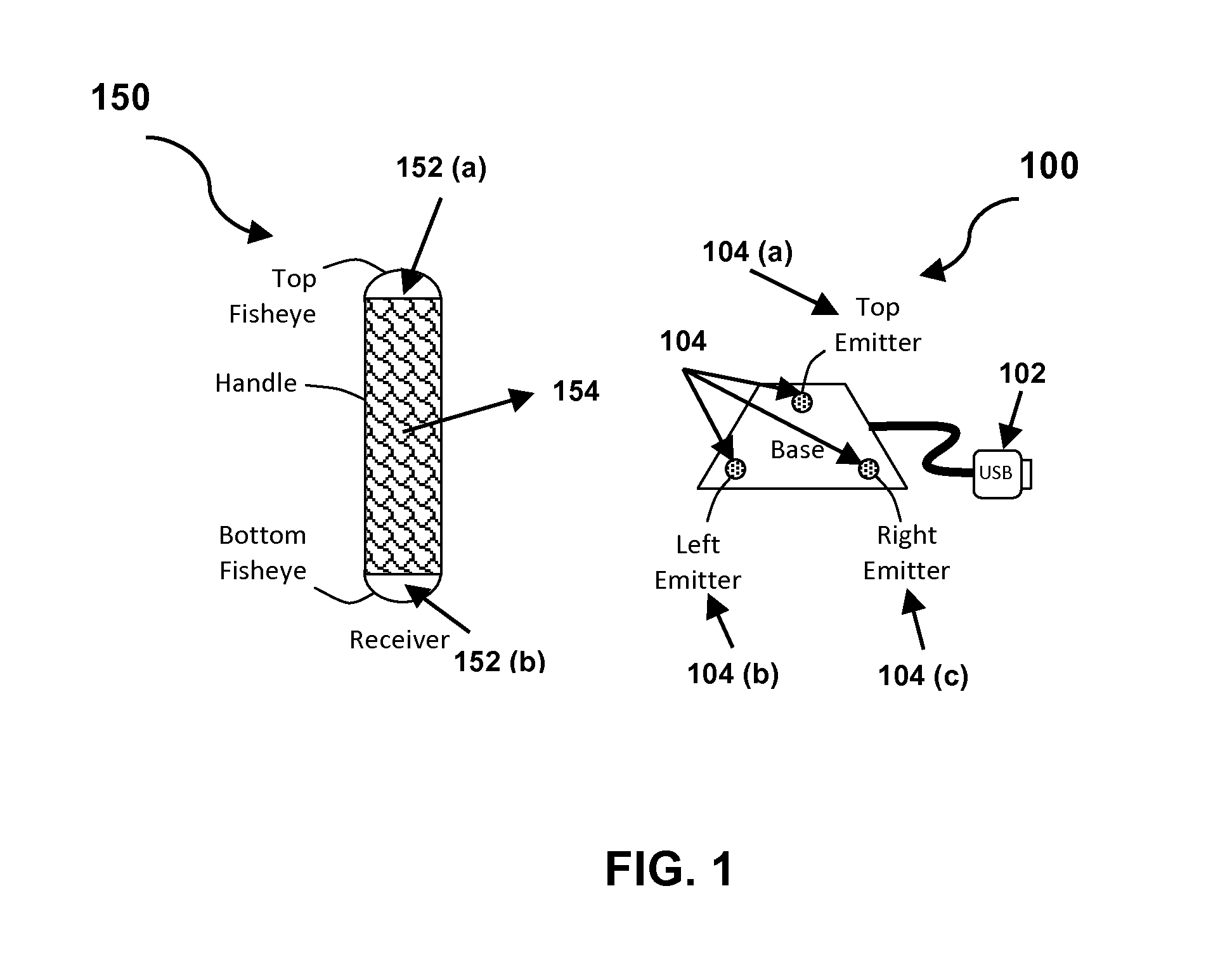System and method for resolving spatial orientation using intelligent optical selectivity
a spatial orientation and selectivity technology, applied in wave based measurement systems, instruments, transmission systems, etc., can solve the problems of high cost associated with these devices, easy damage, limitations of devices, etc., and achieve low cost, simple circuitry and optics, and low processing power
- Summary
- Abstract
- Description
- Claims
- Application Information
AI Technical Summary
Benefits of technology
Problems solved by technology
Method used
Image
Examples
Embodiment Construction
[0027]In the following detailed description of the embodiments of the invention, numerous specific details are set forth in order to provide a thorough understanding of the embodiments of the invention. However, it will be obvious to one skilled in the art, that the embodiments of the invention may be practiced without these specific details. In other instances well known methods, procedures, components and circuits have not been described in detail so as not to unnecessarily obscure aspects of the embodiments of the invention.
[0028]Furthermore, it will be clear that the invention is not limited to these embodiments only. Numerous modifications, changes, variations, substitutions and equivalents will be apparent to those skilled in the art, without parting from the spirit and the scope of the invention.
[0029]The embodiments of the invention provide a system and method to resolve complete free space orientation information of an active receiving device at high speed using simple circ...
PUM
 Login to View More
Login to View More Abstract
Description
Claims
Application Information
 Login to View More
Login to View More - R&D
- Intellectual Property
- Life Sciences
- Materials
- Tech Scout
- Unparalleled Data Quality
- Higher Quality Content
- 60% Fewer Hallucinations
Browse by: Latest US Patents, China's latest patents, Technical Efficacy Thesaurus, Application Domain, Technology Topic, Popular Technical Reports.
© 2025 PatSnap. All rights reserved.Legal|Privacy policy|Modern Slavery Act Transparency Statement|Sitemap|About US| Contact US: help@patsnap.com



